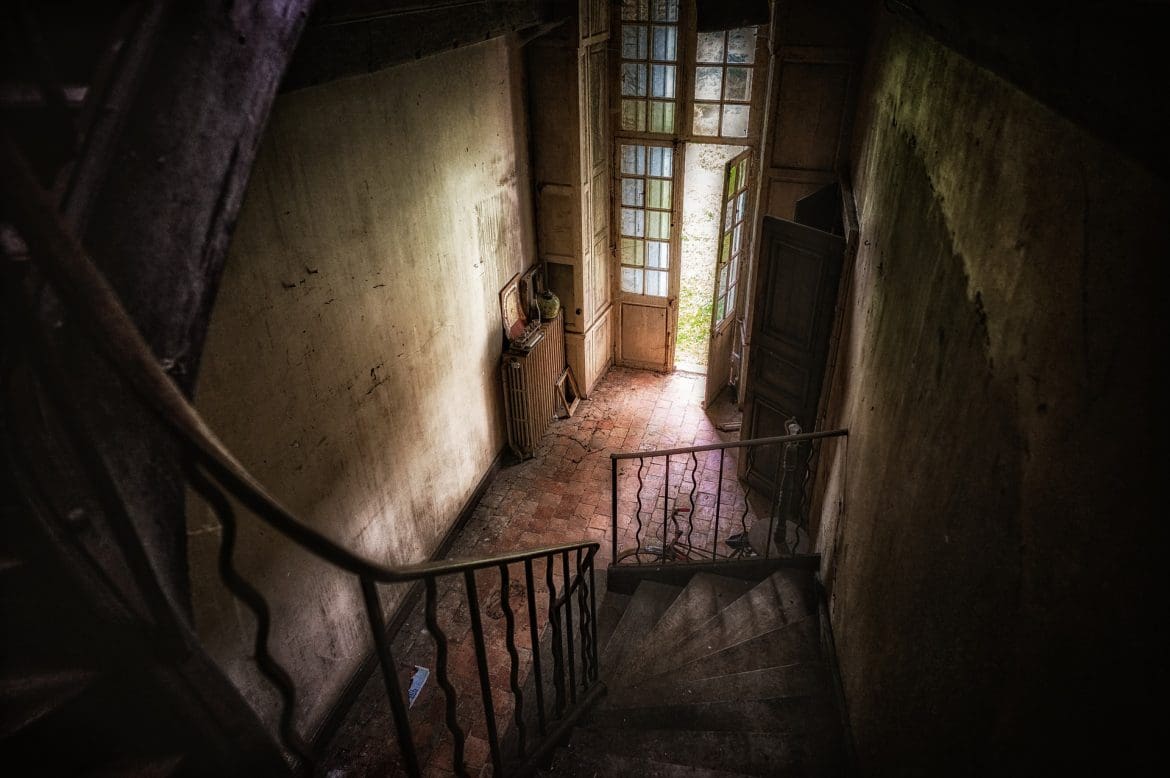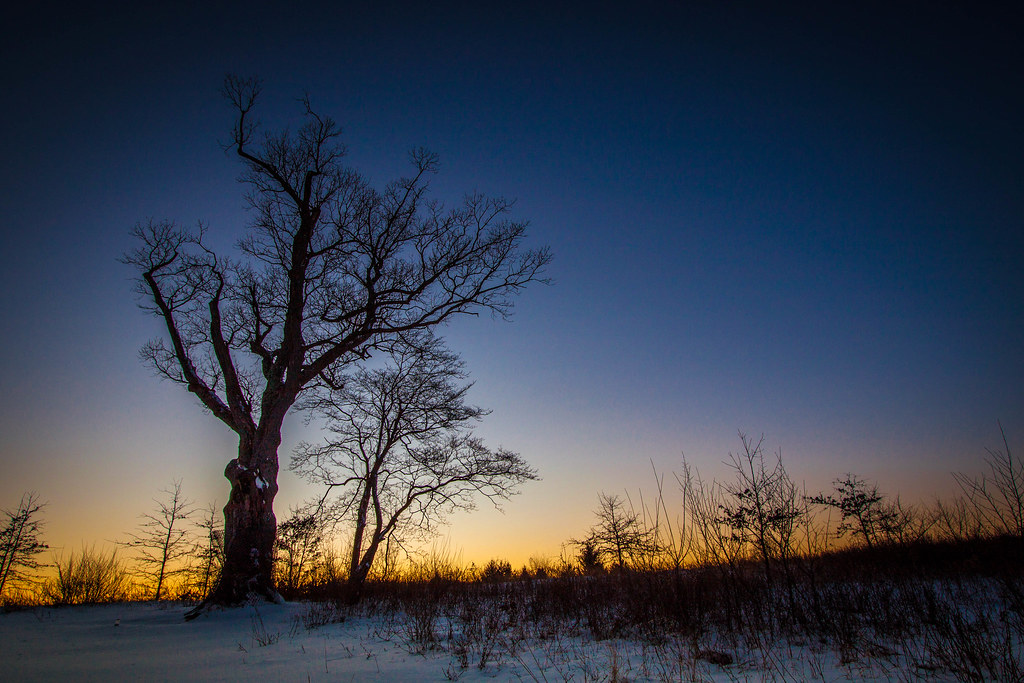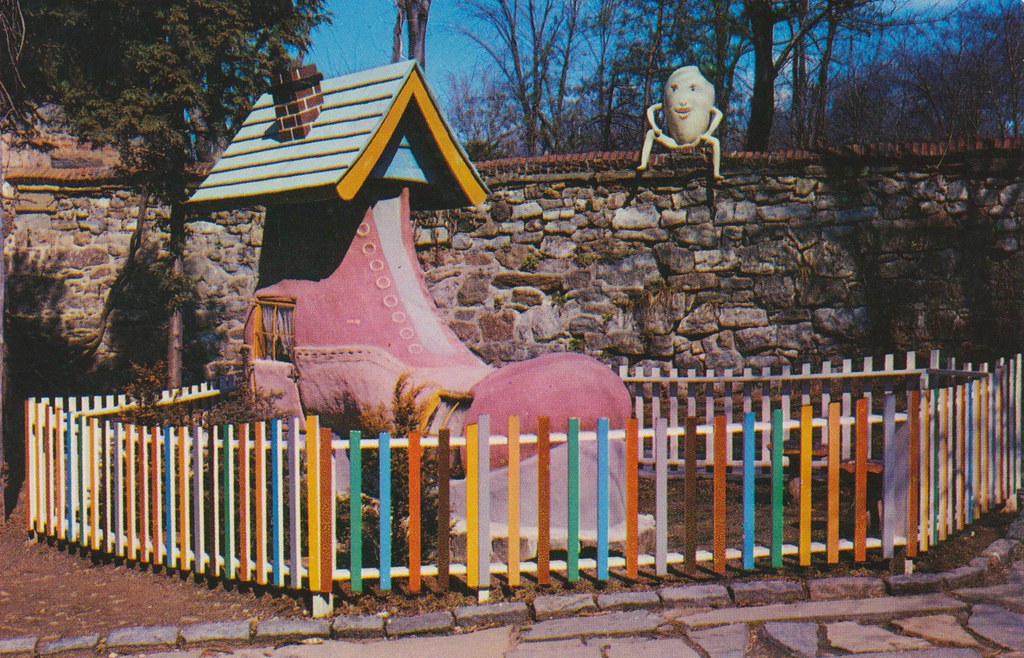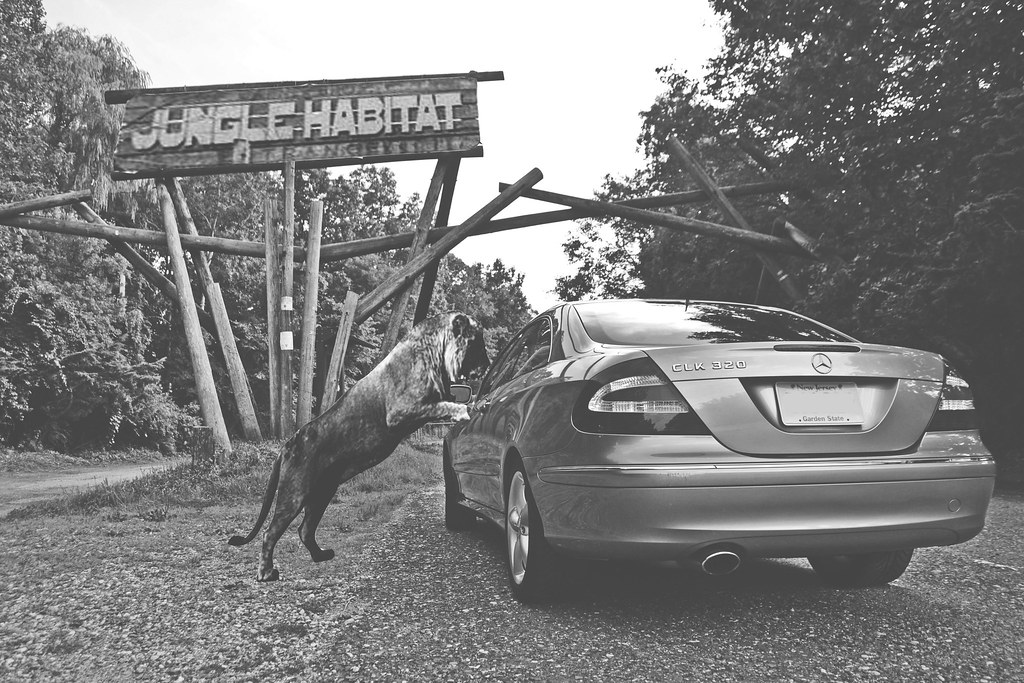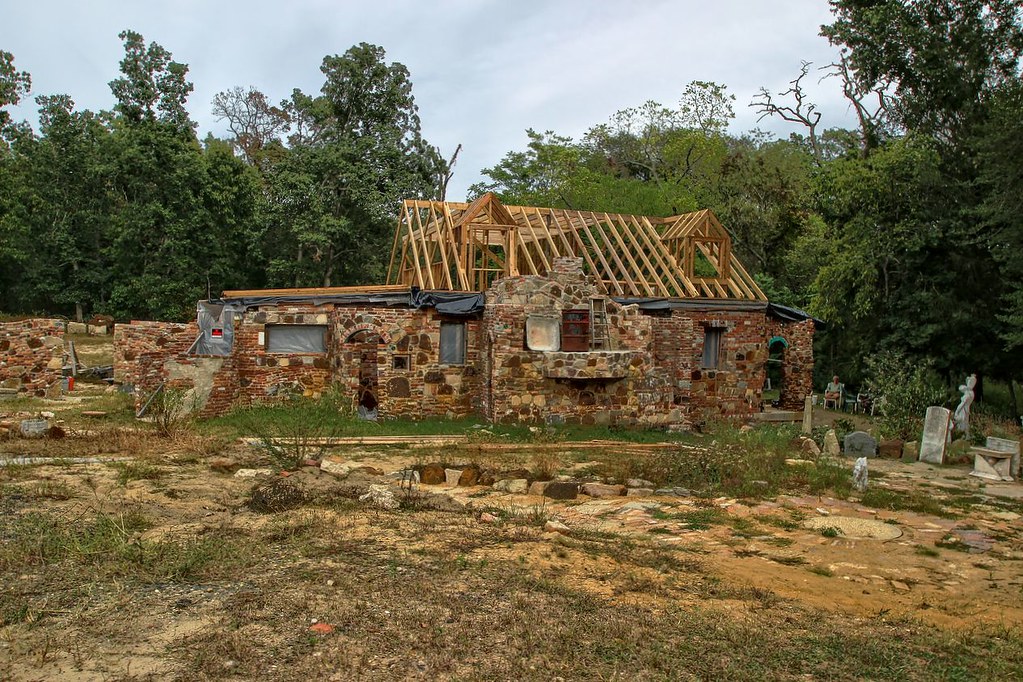There is nothing better than planning day trips to explore different parts of New Jersey. However, while some enjoy the likes of a bed and breakfast or a beach trip, others like to go off the beaten path. Some adventure seekers prefer to explore abandoned structures, roadside attractions and some even venture into haunted settings. If this sounds more like your shtick, read on for a guide to the 10 most peculiar New Jersey sites.
The Cookie Jar House – Glendora, NJ
Does the thought of a huge cookie jar entice you? If you ever find yourself on Rowand Ave. in Glendora, New Jersey, you may just satisfy that sweet tooth (sort of). The Cookie Jar House came about in the late 1940s, the spherical shape of the house was built with the threat of an atomic bomb in mind. Although there were plans to build an entire community of these round, cookie jar-like houses, this home stands alone. The home is a private residence covered by three large trees. If you’d like to catch a glimpse of this peculiar New Jersey home, we recommend driving by the house in the fall or winter, when the trees have lost their foliage.
The Devil’s Tree – Bernards Township, NJ
Locals state that Bernards Township was once the central headquarters of the Ku Klux Klan in New Jersey. Supposedly, the KKK used The Devil’s Tree to lynch Black people and rebellious slaves. Other legends state that a farmer killed his family and then hanged himself from the tree. Although the origin is unknown, locals tell paranormal stories of their visits to this peculiar New Jersey tree. Many say that the tree is cursed and that anyone who disrespects it will soon meet harm’s way. In the winter, the infamous tree is reportedly untouched by snow because the tree, and a nearby boulder known as “Heat Rock,” are allegedly portals to Hell.
The Gates of Hell – Clifton, NJ
If you’re not afraid of the dark and macabre, you might enjoy a trip through a drainage pipe behind the Black Prince Distillery in Clifton, New Jersey. The Gates of Hell drain stands out because it is square and dry while its counterparts typically flow water through them. The opening is marred with murals and satanic graffiti. If you dare explore further, legends say you may find devil worshippers practicing rituals or KKK members convening. More far-reaching tales explain that the drain goes hundreds of levels underground and that satanic sacrifices such as bones, crosses and decaying carcasses fill the tunnels. If you’re brave enough to reach the final door, you may just confront the Devil himself.
Be warned, the Clifton Police Department has stated that they will arrest anyone who enters for defiant trespassing. Additionally, the department has arrested several trespassers for weapons possession, as many carry knives to defend themselves from the Devil and other evil creatures.
The Gingerbread Castle – Hamburg, NJ
Hamburg, New Jersey is home to a failed amusement park. The Gingerbread Castle was a fairytale-themed park that opened in 1930. The park was the brainchild of F.H. Bennett, who drew his inspiration from the Brothers Grimm fairy tales. The park was a popular tourist destination due to its quirky architecture and actors who brought the stories to life while interacting with visitors.
However, the fortress would be nothing but an abandoned, decrepit castle by the early 1980s. The property would undergo brief revivals through special events, such as a haunted house around Halloween. In 2004, The Gingerbread Castle would regain hope when a New Jersey resident purchased the peculiar New Jersey property to restore the castle. The land eventually became too costly to repair and the property would change ownership several times over the next few years. Today, The Gingerbread Castle has found its knight in shining armor in Don Oriolo. Oriolo owns the property and has made significant headway in restoring the castle to its former glory.
Hagedorn Psychiatric Hospital – Glen Gardner, NJ
If you find yourself driving up a mountain on Sanatorium Rd. in Glen Gardner, New Jersey, you may catch a glimpse of the abandoned Hagedorn Psychiatric Hospital. In the early 1900s, the hospital was a tuberculosis sanatorium. A model institution, the facility treated over 10,000 people for more than 20 years. With such success, the sanatorium expanded its public health services in the 1920s and again in the 1950s. However, the hospital eventually closed in the 1970s. A psychiatric hospital was built near the sanatorium site in 1977. This extension called itself a nursing home and housed many seniors until its closing in 2012. Eventually, both buildings became abandoned, left to decay by the state.
Today, the hospital is under renovation, although much of the former institution is still untouched. Some adventure seekers have managed to make their way into the building, but signs warn that you will be charged with trespassing if caught on the property. Wheelchairs, small beds, old notes and hospital supplies remain trapped inside the hospital—much like its institutionalized patients.
Jungle Habitat – West Milford, NJ
In the early 1970s, Warner Bros. opened Jungle Habitat in West Milford. This safari amusement park housed the likes of elephants, Siberian tigers and giraffes. These animals roamed free as park visitors rode down a path in their cars. In the walk-through section of the park, you could feed animals, pet them and even ride a camel or elephant. However, not many people were willing to repeat a trip to Jungle Habitat. Not to mention a string of accidents involving escaped wolves, a lion attack and an elephant bite. Although Warner Bros. planned to expand its operation and add new attractions, the park shut its doors for the last time shortly after Halloween in 1976.
Rumors swirled about animals left to decay on the land and the ones who survived still roaming the land. These rumors attracted adventure seekers far and wide. Jungle Habitat’s abandoned buildings remained for years until the state bought the 800-acre property in 1998. Now a part of Long Pond Ironworks State Park, the site is a favorite spot for dog walkers, bikers and runners. Although the rumors of abandoned safari animals have proved false, you may still catch a glimpse of wildlife, as the site is also a favorite for black bears.
Lucy the Elephant – Margate City, NJ
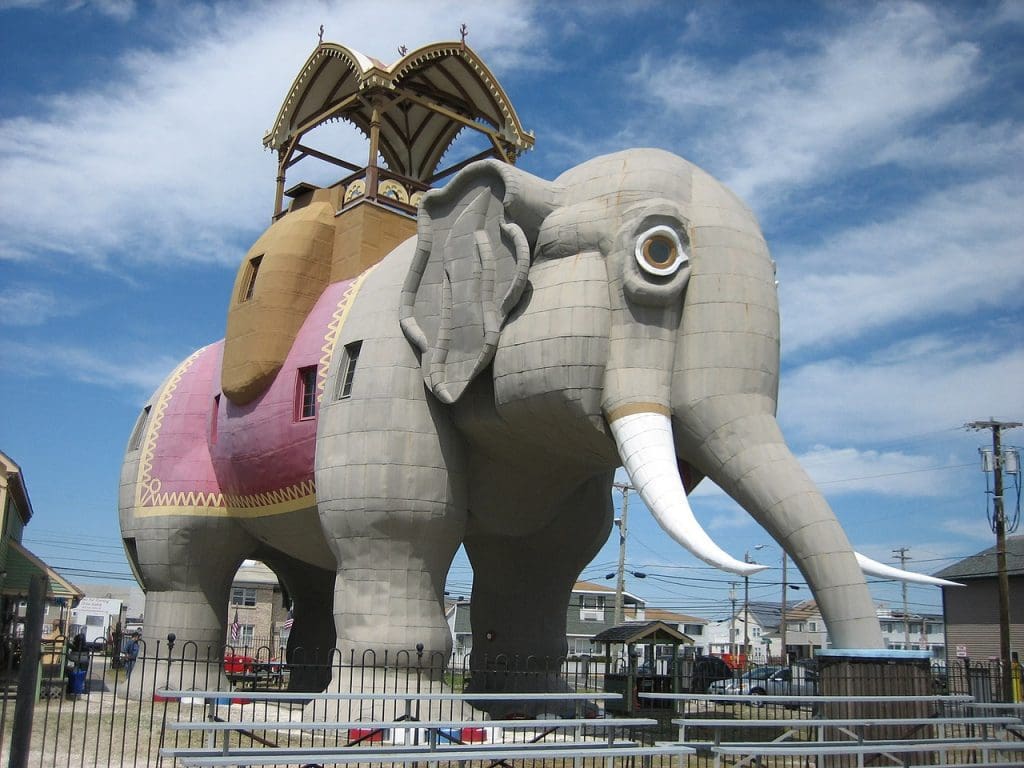
Image by Jim McIntosh
The Jersey Shore has been a tourist hotspot since its inception. However, if you find yourself cruising through Margate City’s coast, you may be startled by a peculiar New Jersey site. In 1881, a six-story tall elephant made of wood and tin sheeting appeared a few miles south of Atlantic City. “Elephant Bazaar” was the brainchild of James V. Lafferty, who built the roadside attraction to lure in tourists and potential property buyers. In 1887, Anton Gertzen bought the structure and his daughter-in-law renamed the attraction “Lucy the Elephant.”
Lucy served various functions over the next several decades, from restaurant to business office and eventually a tavern. Unfortunately, the building fell into disrepair and was ultimately scheduled for demolition. However, Margate residents formed the Save Lucy Committee and moved the monument to its present location. Today, Lucy the Elephant is a national historic landmark and is currently undergoing a $2 million renovation.
Luna Parc – Sandyston Township, NJ
@njdigest Check out Luna Parc, made by NJ local artist @rickyoflunaparc! #newjersey #njtiktok #lunaparc
Richard “Ricky” Boscarino is a New Jersey artist known for his fanciful, witty and sophisticated designs. Luna Parc is Boscarino’s home, workshop and semi-private museum. Twice a year, Boscarino opens the museum to the public for an open house. The museum has a unique architectural style; it features vivid colors, detailed mosaic tiling, curved surfaces made of clay and ceramic, and incorporates objects like license plates and bowling balls.
The Palace of Depression – Vineland, NJ
George Daynor was an eccentric man who lost his fortune in the Wall Street Crash of 1929. Legend says that an angel led Daynor to Vineland, New Jersey where he purchased a seven-acre junkyard. The angel urged him to use the property’s mud, trashed bottles, bed frames, and undesired auto parts to build a home. In spite of the effects of The Great Depression, Daynor erected “The Palace of Depression.”
Daynor praised this work religiously, stating that his structure demonstrated that it was possible to overcome The Great Depression. However, his need for attention and publicity would be his downfall. When a child was reported missing, Daynor called the FBI and made false reports in a bid to gain more publicity and visitors. Consequently, he was imprisoned for a year. The junkyard would go into decline as Daynor continued his outlandish publicity acts. He eventually died in 1964 and a fire destroyed The Palace of Depression a few years later.
In the late 1990s, Vineland resident Kevin Kirchner made it his mission to restore this piece of local peculiar New Jersey history. Over 20 years later, the junk palace is still a work in progress. The Palace of Depression Restoration Association and The Friends of Historic Vineland expect to fully open the site to the public soon.
Sybil’s Cave – Hoboken, NJ
Sybil’s Cave was a hotspot for Hoboken visitors. The manmade cave had an elaborate Gothic-style entrance and was excavated near a natural spring where visitors would relax on a nice day. That all changed in the summer of 1841 when police found Mary Rogers’ lifeless body floating in the Hudson River near Sybil’s Cave. Mary Rogers was Hoboken’s noted beauty and worked as a clerk in a tobacco shop, where she attracted many customers. Known in the press as the “Beautiful Cigar Girl,” Rogers’ murder has yet to be solved.
Surprisingly, Rogers’ death led to an upsurge of visitors. People arrived in droves to gawk at the murder scene and there was another uptick in sightseers upon the suicide of Roger’s fiance. Afflicted by accusations of murder and his own grief, Daniel Payne poisoned himself near the cave. Weeks later, another murder would attract locals and Sybil’s Cave was all but forgotten.
This rural retreat eventually became industrialized and the cave was destroyed in the 1930s. However, the cave was excavated again in 2007 once explorers rediscovered its existence. Today, a new gate replicates its former glory.
Have you been to any of these peculiar New Jersey sites? Let us know if you’re up for exploring these spots in the comments.
About the Author/s
Helen is an editorial intern at The Digest. A senior at Drew University, she enjoys cooking and listening to music. When she's not working in the kitchen, she's typically catching up on pop culture news.
